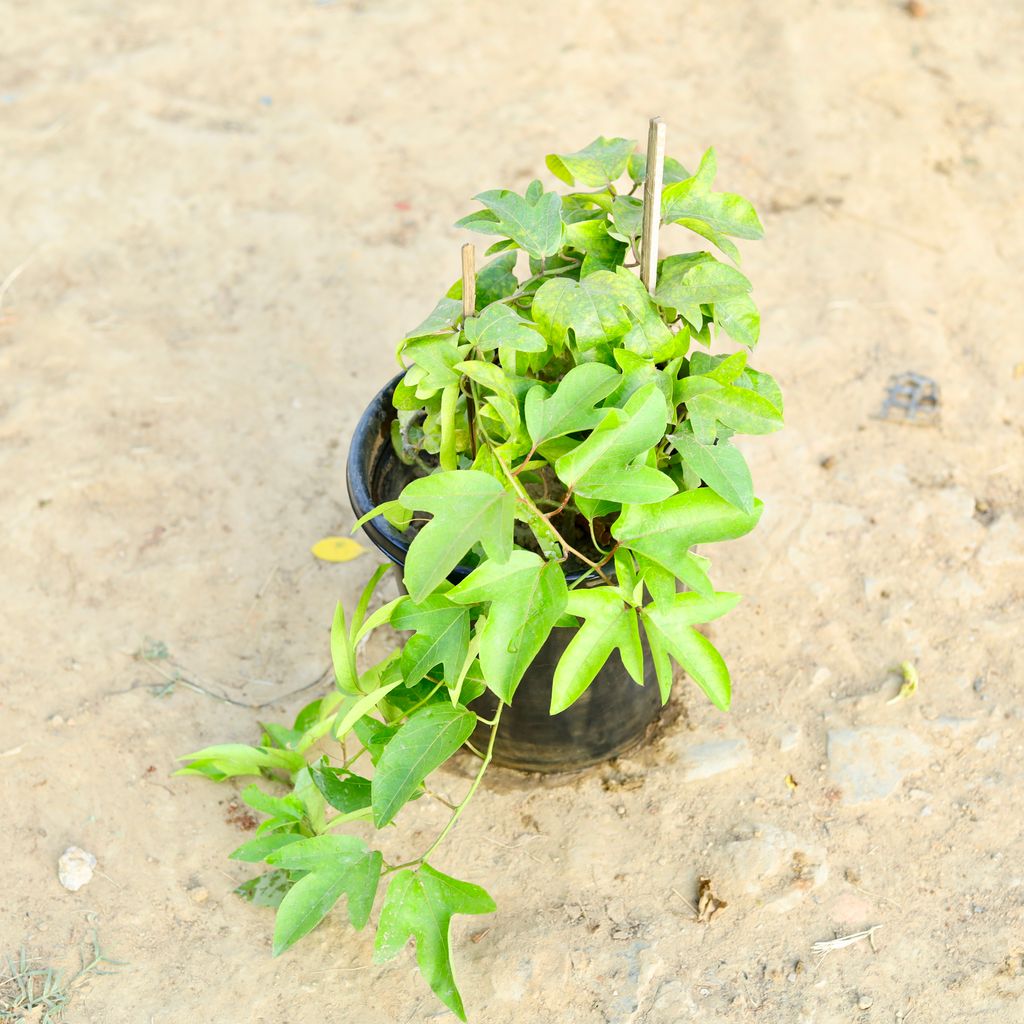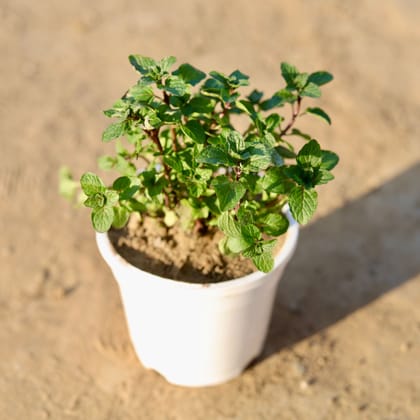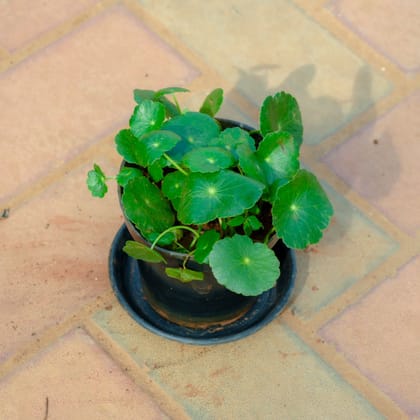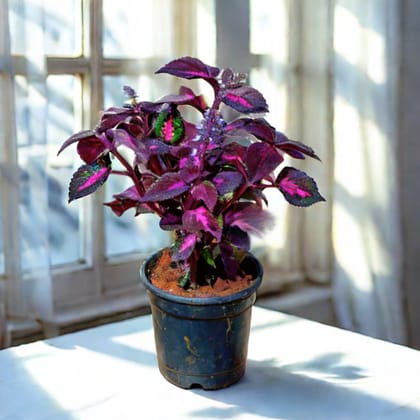-
Plants
- Plants
-
Pots
- Pots
-
Soil & More
- Soil & More
-
Home Decor Plants
- Home Decor Plants
-
Tools
- Tools
-
Seeds
- Seeds
-
Gifting
- Gifting
-
Bulk Gifting
- Bulk Gifting
-
Others
- Others
-
Sale
- Sale
-
Best Sellers
- Best Sellers
Urvann is your one-stop online nursery for plants, planters, gardening accessories, and tools. Order fresh plants and get free home delivery on the next day!
ENPassiflora, known also as the passion flowers or passion vines, is a genus of the family Passifloraceae. They are mostly tendril-bearing vines, with some being shrubs or trees. They can be woody or herbaceous. Passion flowers produce regular and usually showy flowers with a distinctive corona.
Passion flowers have floral structures adapted for biotic pollination. Pollinators of Passiflora include bumblebees, carpenter bees, wasps, and hummingbirds. Famously, they are exclusively targeted by many butterfly species of the tribe Heliconiini.
Benefits of Passiflora Plant
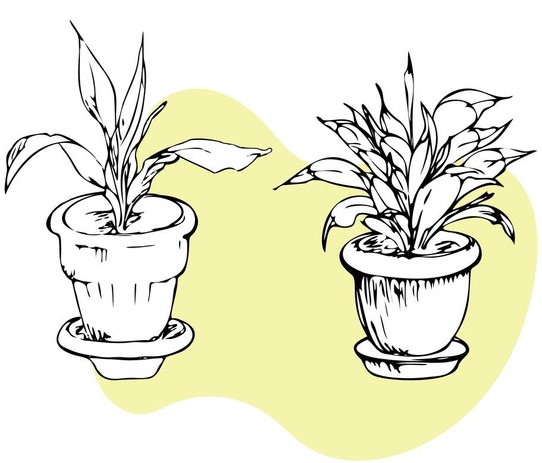 Ornamental Beauty :
Ornamental Beauty :
A number of species of Passiflora are cultivated outside their natural range for both their flowers and fruit. Hundreds of hybrids have been named; hybridizing is currently being done extensively for flowers, foliage, and fruit.
 Good for Pollination :
Good for Pollination :
The blooms of the Passiflora plant attract many pollinating insects such as butterflies, bumblebees, and more. Pollination is very important to promote biodiversity. They are an important nectar source for butterflies.
 Low Maintenance :
Low Maintenance :
The flowers are very easy to care for and thrive well in tropical and subtropical countries such as India. However, the plant requires thorough watering and frequent pruning to help in its healthy growth.
Care Tips for Passiflora Plant
 Watering :
Watering :
The soil for the Passiflora plant must be kept moist, especially during the growing season. Water plants consistently, but avoid water-logging.
 Light :
Light :
The Passiflora plant loves bright sunlight for at least 6-7 hours a day.
 Placement :
Placement :
Passiflora is an outdoor plant. It should be kept in an area receiving bright sunlight.
 Fertilization :
Fertilization :
To Fertilize - Add nitrogen and phosphorus to the Passiflora Plant to maintain good plant growth. You can also add dry banana peels as they are a rich source of nitrogen. You can also use vermicompost every 2 weeks.
 Ideal Soil Mix :
Ideal Soil Mix :
Passiflora plants prefer acidic soil. Use cow dung as part of your soil mix as it will make the soil acidic. The ideal soil mix for this plant should be, Garden Soil (35%) + Cocopeat (30%) + Vermicompost (30%) + Neem Khali (5%).
 Pruning :
Pruning :
Keep pruning the Passiflora plant to encourage flower growth and give it more spread.
 Pest Control :
Pest Control :
Aphids, Thrips, fruitflies, and whiteflies are a big problem for the Passiflora plant. Keep spraying the plant with neem spray every 2 weeks to help with pest control.
Frequently Asked Questions about Passiflora Plant
1. What are the common colors of Passiflora plants?
Passiflora plants commonly have flowers in the shade of purple and blue.
2. Can I grow Passiflora indoors?
No, Passiflora cannot be grown indoors as it needs lots of sunlight and a well-ventilated environment
3. How often should I water my Passiflora plant?
Check to see if the topmost layer of the soil is completely dry, and water accordingly.
4. Where can I buy Passiflora plants?
Head over to Urvann, India’s favorite online nursery, and browse from their extensive collection of plants.
5. Can I grow Passiflora in cold climates?
Passiflora is a perennial plant that starts blooming with a slight chill in the air.
.
VDN0015P- Home
- Climbers And Creepers
- Summer Plants
- Rakhi Bel in 8 Inch Nursery Pot
Rakhi Bel in 8 Inch Nursery Pot
- Unique floral structure
- Purple blooms
- Good for pollination
- Beginner friendly
- Trailing vine
Description of product
Passiflora, known also as the passion flowers or passion vines, is a genus of the family Passifloraceae. They are mostly tendril-bearing vines, with some being shrubs or trees. They can be woody or herbaceous. Passion flowers produce regular and usually showy flowers with a distinctive corona.
Passion flowers have floral structures adapted for biotic pollination. Pollinators of Passiflora include bumblebees, carpenter bees, wasps, and hummingbirds. Famously, they are exclusively targeted by many butterfly species of the tribe Heliconiini.
Benefits of Passiflora Plant
 Ornamental Beauty :
Ornamental Beauty :
A number of species of Passiflora are cultivated outside their natural range for both their flowers and fruit. Hundreds of hybrids have been named; hybridizing is currently being done extensively for flowers, foliage, and fruit.
 Good for Pollination :
Good for Pollination :
The blooms of the Passiflora plant attract many pollinating insects such as butterflies, bumblebees, and more. Pollination is very important to promote biodiversity. They are an important nectar source for butterflies.
 Low Maintenance :
Low Maintenance :
The flowers are very easy to care for and thrive well in tropical and subtropical countries such as India. However, the plant requires thorough watering and frequent pruning to help in its healthy growth.
Care Tips for Passiflora Plant
 Watering :
Watering :
The soil for the Passiflora plant must be kept moist, especially during the growing season. Water plants consistently, but avoid water-logging.
 Light :
Light :
The Passiflora plant loves bright sunlight for at least 6-7 hours a day.
 Placement :
Placement :
Passiflora is an outdoor plant. It should be kept in an area receiving bright sunlight.
 Fertilization :
Fertilization :
To Fertilize - Add nitrogen and phosphorus to the Passiflora Plant to maintain good plant growth. You can also add dry banana peels as they are a rich source of nitrogen. You can also use vermicompost every 2 weeks.
 Ideal Soil Mix :
Ideal Soil Mix :
Passiflora plants prefer acidic soil. Use cow dung as part of your soil mix as it will make the soil acidic. The ideal soil mix for this plant should be, Garden Soil (35%) + Cocopeat (30%) + Vermicompost (30%) + Neem Khali (5%).
 Pruning :
Pruning :
Keep pruning the Passiflora plant to encourage flower growth and give it more spread.
 Pest Control :
Pest Control :
Aphids, Thrips, fruitflies, and whiteflies are a big problem for the Passiflora plant. Keep spraying the plant with neem spray every 2 weeks to help with pest control.
Frequently Asked Questions about Passiflora Plant
1. What are the common colors of Passiflora plants?
Passiflora plants commonly have flowers in the shade of purple and blue.
2. Can I grow Passiflora indoors?
No, Passiflora cannot be grown indoors as it needs lots of sunlight and a well-ventilated environment
3. How often should I water my Passiflora plant?
Check to see if the topmost layer of the soil is completely dry, and water accordingly.
4. Where can I buy Passiflora plants?
Head over to Urvann, India’s favorite online nursery, and browse from their extensive collection of plants.
5. Can I grow Passiflora in cold climates?
Passiflora is a perennial plant that starts blooming with a slight chill in the air.
.
Related products
User reviews
2 Reviews
I loved all the products.Oct 23, 2024 2:28:29 PM
Too good service. Nice plants and delivery. Thanks Urvann.Oct 23, 2024 2:27:32 PM
Urvann is your one-stop online nursery for plants, planters, gardening accessories, and tools. Order fresh plants and get free home delivery on the next day!
- Indoor Plants
- Low Maintenance Plants
- Flowering Plants
- Outdoor Foliage Plants
- Religious & Sacred Plants
- Air Purifying Plants
- Cactus & Succulents
- Good Luck Plants
- Plants by Location
- Plants of the Month
- Herbs-Medicinal & Vegetable Plants
- Fruit Plants
- Monsoon Plants
- Hanging Plants
- Potted Plants
- Bonsai Plants
- Special Plant Combos
- Bamboo Plant
- Pet Friendly Plants
- Plants to grow in Water
- Mosquito Repellent Plants
- Climbers & Creepers
Urvann India Private Limited
E-176
Delhi
Delhi 110060
IN
NEWSLETTER
Subscribe to get Email Updates!
Thanks for subscribe.
Your response has been recorded.



